- News
- Reviews
- Bikes
- Accessories
- Accessories - misc
- Computer mounts
- Bags
- Bar ends
- Bike bags & cases
- Bottle cages
- Bottles
- Cameras
- Car racks
- Child seats
- Computers
- Glasses
- GPS units
- Helmets
- Lights - front
- Lights - rear
- Lights - sets
- Locks
- Mirrors
- Mudguards
- Racks
- Pumps & CO2 inflators
- Puncture kits
- Reflectives
- Smart watches
- Stands and racks
- Trailers
- Clothing
- Components
- Bar tape & grips
- Bottom brackets
- Brake & gear cables
- Brake & STI levers
- Brake pads & spares
- Brakes
- Cassettes & freewheels
- Chains
- Chainsets & chainrings
- Derailleurs - front
- Derailleurs - rear
- Forks
- Gear levers & shifters
- Groupsets
- Handlebars & extensions
- Headsets
- Hubs
- Inner tubes
- Pedals
- Quick releases & skewers
- Saddles
- Seatposts
- Stems
- Wheels
- Tyres
- Health, fitness and nutrition
- Tools and workshop
- Miscellaneous
- Cross country mountain bikes
- Tubeless valves
- Buyers Guides
- Features
- Forum
- Recommends
- Podcast
feature
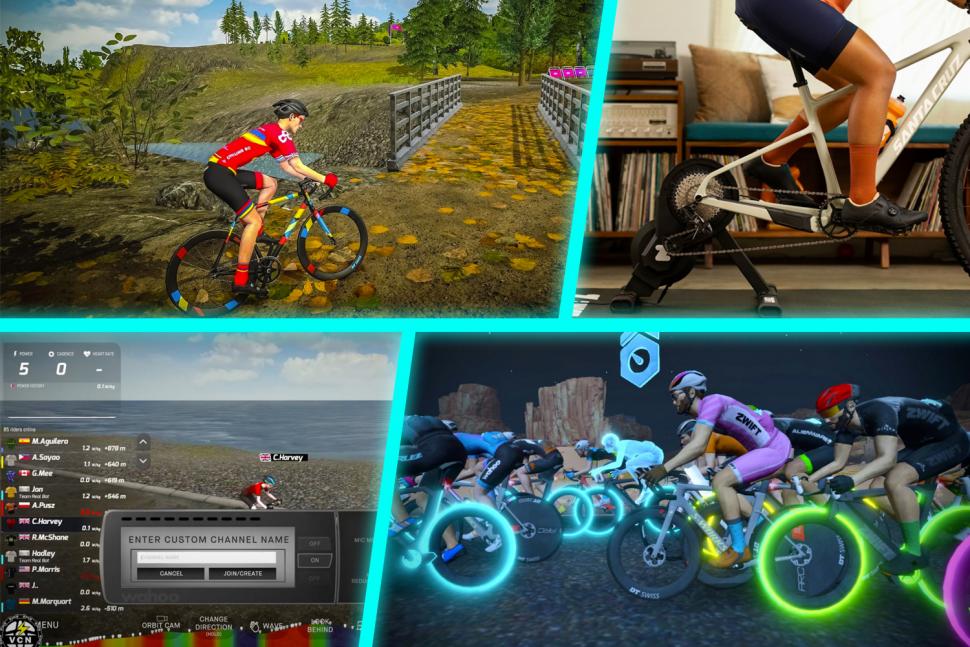 Virtual Cycling arms race lead image November 2022
Virtual Cycling arms race lead image November 2022The indoor cycling arms race: are virtual training platforms getting better and better?
Hot on the heels of significant release updates, the industry-leading virtual cycling platforms are changing the game at a pace never seen before, and virtual cycling is the winner.
In the struggle for supremacy this 2022 indoor cycling season, the superpowers have faced off in a battle to claim their stake in the virtual cycling landscape.
The opening salvo came from Zwift in early September, with an ambitious rollout featuring a host of improvements. Wahoo RGT recently returned fire when on 25 October, it announced the immediate release of several highly sought upgrades. The cycling community is the victor in this virtual arms race as the many platforms push to raise the bar.
Wahoo acquired RGT in April 2022 and began working on integrating and developing its membership offering. "Daylight savings mark the start of the indoor training season for many," according to Wahoo spokesperson Dana Berry-Monroe, "so we timed our exciting new features and updates to launch at this time."
The release includes outdoor workouts, integrated Voice Chat, a new virtual Real Road, and new structured training plans and cross-training workouts.
Voice chat comes to RGT
The crown jewel of Wahoo RGT's release in the eyes of many of its community members is the introduction of integrated voice chat to the platform. The first of its kind, the innovative voice feature streamlines communication between riders, removing the need for third-party apps like Discord and messenger voice.
“It's a straightforward design that works and is simple, intuitive, and user-friendly,” says Riley Harvey of the Virtual Cycling Network (VCN).
The main or open channel allows a rider to talk with fellow cyclists sharing the road and during group events. Friends and teammates can create customisable private channels, and a race radio is available for event organisers to provide instruction or share the insight of coaches or guests.
RGT is testing proximity features that allow you to talk to riders nearby to give a quick "hello", or an "on your left" that they intend to add soon. It's all controlled through a built-in control panel on the user display.
Voice chat brings RGT users functionality that eliminates an added layer of complexity. It's a tried and true aspect of the mainstream video gaming experience that is absent from the other indoor cycling platforms currently.
Zwift has HoloReplay
Zwift has yet to let on that it has plans to integrate voice chat despite the community's clamouring. Instead, its users are distracted by the shiny new car in the driveway borrowed from the Super Mario Kart garage. Like Mario's ghost car, Zwift's HoloReplay feature appears at timed segments on the virtual roads giving the user a chance to race against their previous personal record.
> Zwift releases new features including ability to race yourself
As you approach a timed sprint or KOM, a holographic avatar of your best taunts you at the line, then takes off, and it's on! The visual representation ups the motivation game a notch and provides a practical understanding of pacing. Holoreplay is the evolution of Zwift's wildly popular PacePartners feature, giving riders seeking a group ride or social workout a 24-7 opportunity at various paces.
RGT has Real Bots
The concept is not novel, and RGT has its own called Real Bots (RBs). Wahoo-RGT explains that Real Bots are a selection of bots that vary their behaviour based on Real-World cycling scenarios. The RBs differ by FTP and power curve, placing them into classes imitating rider styles, like All-rounder, Time trialist, Puncheur and Sprinter.
When sparked by specific triggers, the RBs change their power output and can sprint, ride a tempo pace, or slow down to recover, and the experience is customisable by users.
"When combined with RGT's pace bots (steady w/kg at all times)," notes early RGT adopter Jason Hurst, "RBs invigorate a solo ride and enable an exciting unstructured training session once the user is familiar with their behaviour and configuration."
The bots distinguish RGT and Zwift, as does the recently added "Ride Now" feature. Users who select "Ride Now" are teleported to the rider they've chosen to join in the virtual world they're riding. It will come in handy when searching for a friend, creating a meetup, or during group rides and events when you've fallen off the pace.
RGT's new 'Real Road' feature
A feature common in its appeal to the greater virtual cycling community is the longing for new roads and routes to ride. With the recent update, Wahoo X launched the 'Dunoon Crossover' on RGT for more variety and the chance for their members to preview some of Scotland's scenery in a virtual setting ahead of the 2023 UCI World Championships*.
Wahoo RGTs Berry-Monroe says, "This innovative new "Real Road" becomes the first realistic gravel and MTB experience in the virtual riding category. Single-track off-road sections and resistance changes based on the road surface bring a new experience to virtual riding and racing, as riders must now time their sprints and overtakes."
The update brings the RGT 'Real Road' library to thirteen, including iconic cycling regions in Belgium, Italy, France, the UK, and the USA. Wahoo RGT adds this to its distinct and recently enhanced 'Magic Road' feature giving unlimited ride possibilities. Members can upload their routes via a GPX file and ride, share, and create events using a course of their creation.
Zwift's Urukazi road expansion to Makuri Island
Zwift doesn't have magic roads, but it does have a generous offering of virtual miles across nine worlds with hundreds of routes on varied terrain. The Urukazi expansion of the Makuri Islands (Japan) promised before the season is rolling out in November to Zwifters taking part in their monthly ZRacing series.
Now with Zwift’s 9 November game update, all users will get a chance to explore Urukazi. The Urukazi expansion of Zwift’s Makuri Island follows their November 2021 Neokyo expansion, adding over 40 virtual miles and eight new routes.
Zwift developers infuse their interpretation of the island's cityscape, country, and coastal scenery artistically, skillfully, and in a way many discerning virtual cyclists consider the industry standard. Plus, the introduction of a new surface type that's not found anywhere else on Zwift. Rumour has it that Zwifters will soon have sand in their cycling shoes and more resistance on their pedals.
Zwift Hub Smart Trainer and Wahoo X
Despite pushback, Zwift's foray into the hardware space entrenched by Wahoo has perhaps created the most shock and awe throughout the community. The Zwift Hub smat trainer and the £449 price tag have definitely disrupted the market.
Zwift's first smart trainer streamlines the virtual cycling onboarding process with a pre-installed cassette and easy-to-follow setup instructions at an affordable price point. Not everyone has welcomed the launch of Zwift's own trainer, but that's another story...
> Wahoo sues Zwift and JetBlack, claims new Zwift Hub "copying Kickr Core"
Wahoo dug in its heels with the recent release, expanding on what it claims to do better than the others in the industry—creating a combined virtual and real-world cycling ecosystem. Wahoo X is a unique all-in-one membership with a host of year-round riding, structured training, racing, and challenges, indoors and out.
"Whatever being a better athlete means to a rider," Wahoo's Berry-Monroe says, "Wahoo X offers the most comprehensive ways to get there."
All virtual cycling platforms are upping their games
Wahoo and RGT are just two of the many virtual cycling platforms trying to get you there, and the others are doing their part to move the needle. New player CADEsport has real-world physics wind simulation. You can gain an advantage by steering around obstacles to avoid crashing and performance-related virtual equipment and component tweaks, like fine-tuning tyre width, pressure and tread for the surface.
“Our centerpiece is esports,” says MyWhoosh’s Michael Lamprecht.
“We currently host the highest level of esports racing in the world. We offer unmatched prize money and robust verification.
"Racing on MyWhoosh is a legitimate pathway straight to the World Tour, as evidenced by the announcement of Michael Vink’s signing with UAE Team Emirates who frequently raced within the Sunday Race Club on MyWhoosh.”
MyWhoosh is free, but you can't tell by its ever-evolving platform. Rouvy recently added Strava live segments, and Bkool is hosting the Giro d’Italia Virtual. No moss is growing on the computer-graphic stones of any of the major platforms and it shows in the product.
Zwift and Wahoo-RGT are upping their games at a never-before-seen pace. They have made positive changes to their user interface and home screen, and the "pack dynamics" and game physics are continually evolving. The workout and training options are effective and numerous. They're making game-changing innovations to racing and esports in the name of fairness and competitive interest.
“The Echelon Racing League and Wahoo RGT launched the first ever handcycling avatar in December of 2021 in an effort to make the eRacing scene more equitable, inclusive and representative for athletes of all abilities," says Echelon’s Eric Hill.
!In 2023, the ERL and its partners will launch two additional adaptive bicycles and avatars to further this effort.”
Zwift’s recent addition of a handcycle avatar brings the platform up to speed, making the representation of adaptive athletes, inclusion, and diversity a reality.
Virtual cycling is the winner
The platforms are learning from one another and growing. An early adopter of multiple virtual cycling platforms, YouTuber Jonathan Crain, sums it up well when he says: "I think the headline here is that the competition between Zwift and RGT is pushing both apps to be better.The experience is significantly better now than it was a year ago. That’s really what you want to see.”
Zwift's mission is "More People, More Active, More often," and Wahoo-RGTs vision is "Building a better athlete in all of us."
They're getting better with every new game release, and virtual cycling is the victor in this arms race.
* Update, 15/11/2022, 15:13pm: Zwift contacted road.cc to clarify that it is the official virtual fitness platform for the 2023 UCI World Championships in Scotland, as well as hosts of the esports worlds.
A physical therapist with over 25 years of experience, Christopher Schwenker is on a journey to give back to the cycling community for rewarding experiences and fulfilling relationships through the pages of his virtual cycling blog, The Zommunique.com. He rode his bike across the US in 2022 to raise awareness of his cycling-related non-profit, The DIRT Dad Fund.
Latest Comments
- mdavidford 18 min 37 sec ago
It's incorrect in classic formal English, but a perfectly acceptable construction in many forms of spoken English (increasingly so, to the point...
- Drinfinity 39 min 47 sec ago
That corner round the back of the cinema catches riders out in pretty much every race. The pavement there is also fairly narrow, and not barriered,...
- mctrials23 39 min 50 sec ago
Is your curb dropped? No, then you don't have a driveway and if a cycle lane is build past your house then tough luck. The rules on dropping curbs...
- Rendel Harris 43 min 33 sec ago
You could argue that either way but it seems reasonable to call it two separate incidents, he was assaulted, went home, later went back to the...
- ubercurmudgeon 2 hours 31 min ago
What a shit world we've created.
- Freddy56 3 hours 1 min ago
....or just buy galibier's Barrier glove and you don't need 2 pair of gloves. I think mine are 5 winters old.
- HollisJ 4 hours 28 min ago
Probably better suited as an all-road wheelset - the internal width of 22mm is kind of narrow for a gravel wheel these days, where the standard is...
- Miller 5 hours 31 min ago
If I was a DS I'd be lambasting Bettiol for being defeatist but as a spectator, his view seems pretty realistic. Anyway I want Pogi to stay out of...
- wtjs 6 hours 7 min ago
I hope this outcome brings some form of closure for Roseanne’s wider family and my thoughts very much remain with them today...

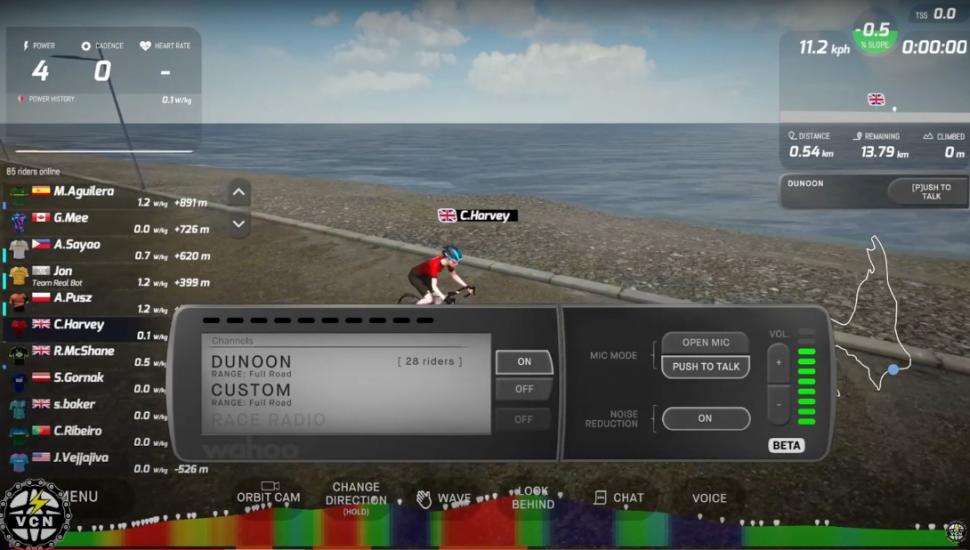
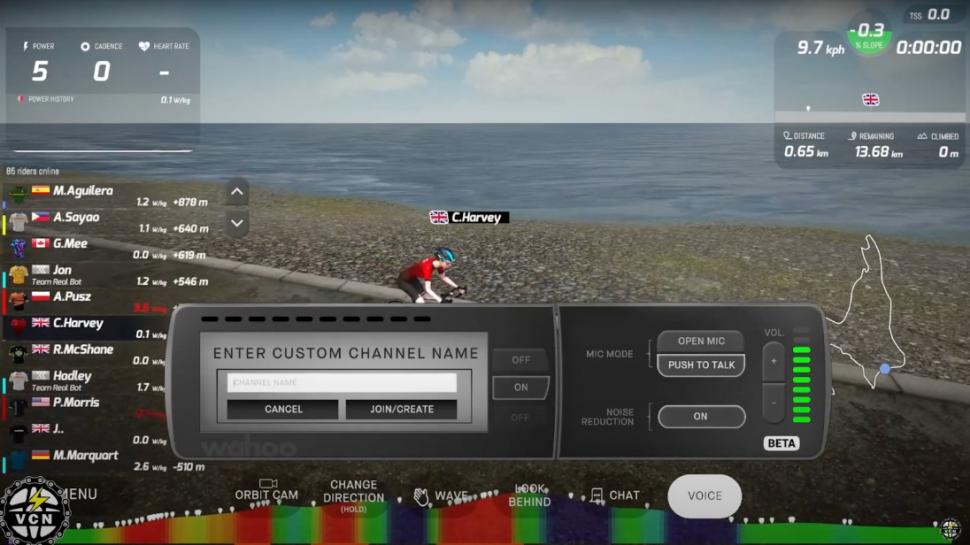
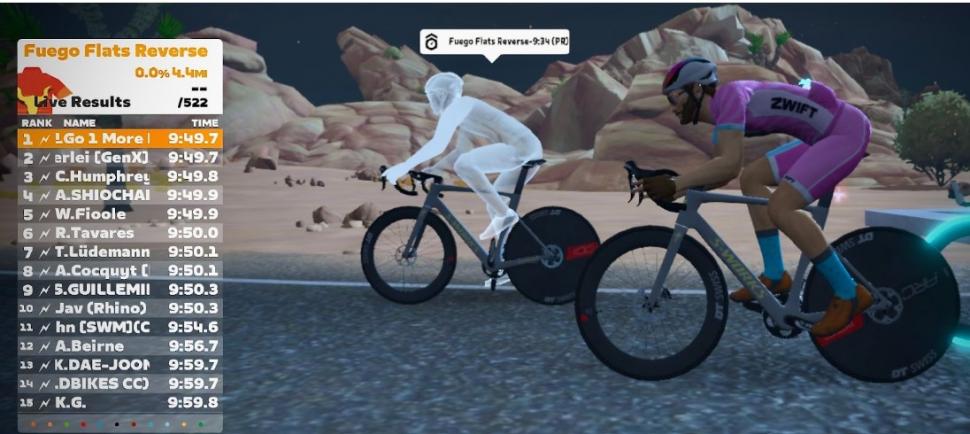
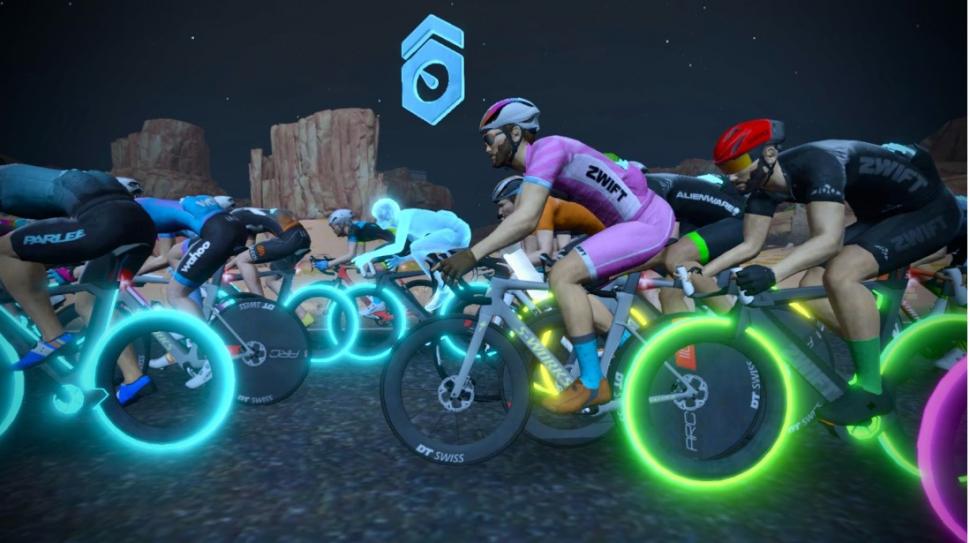
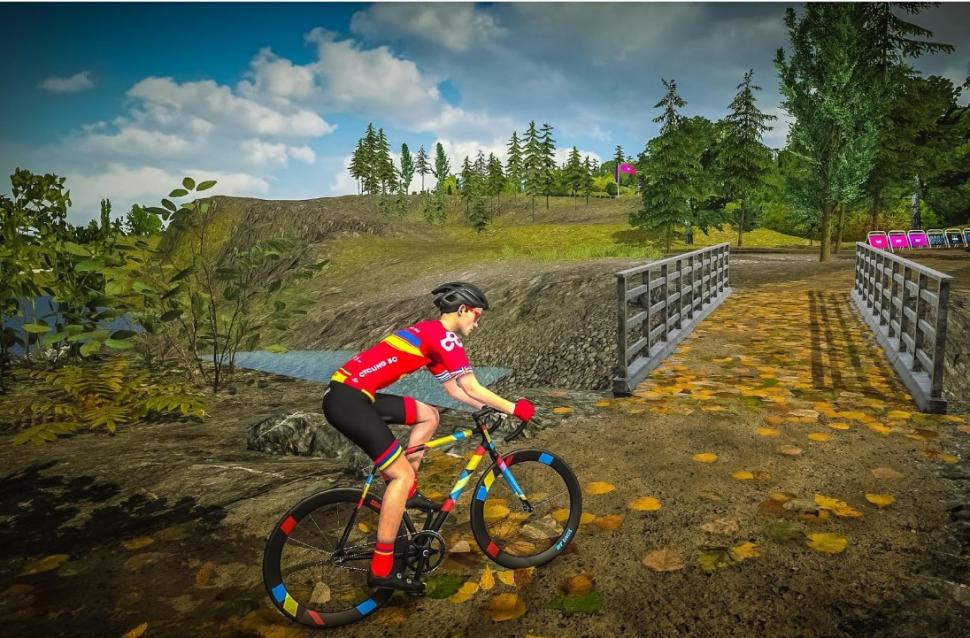
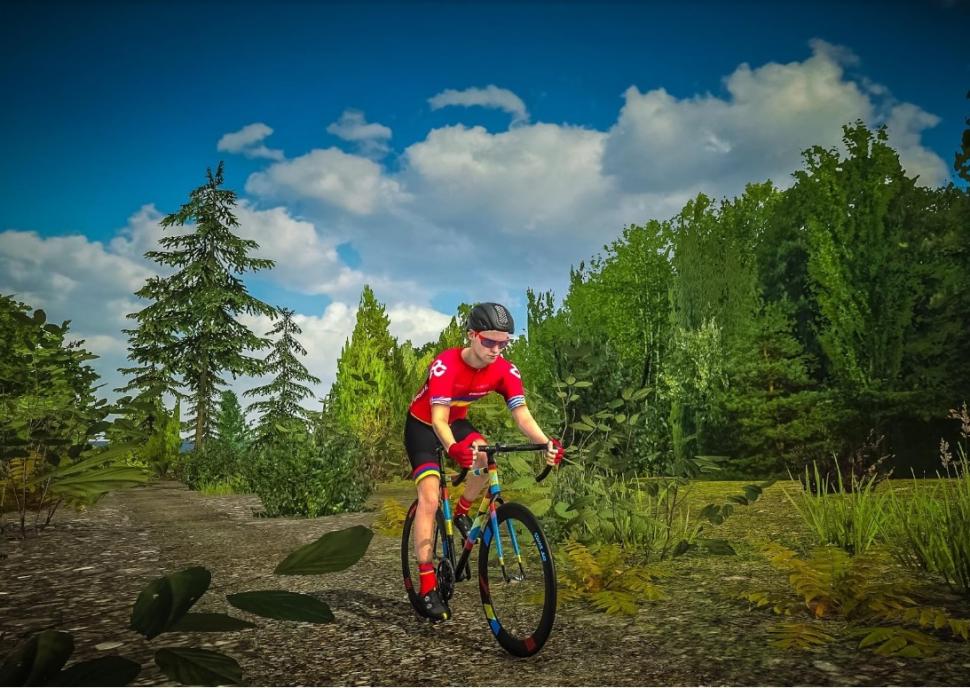
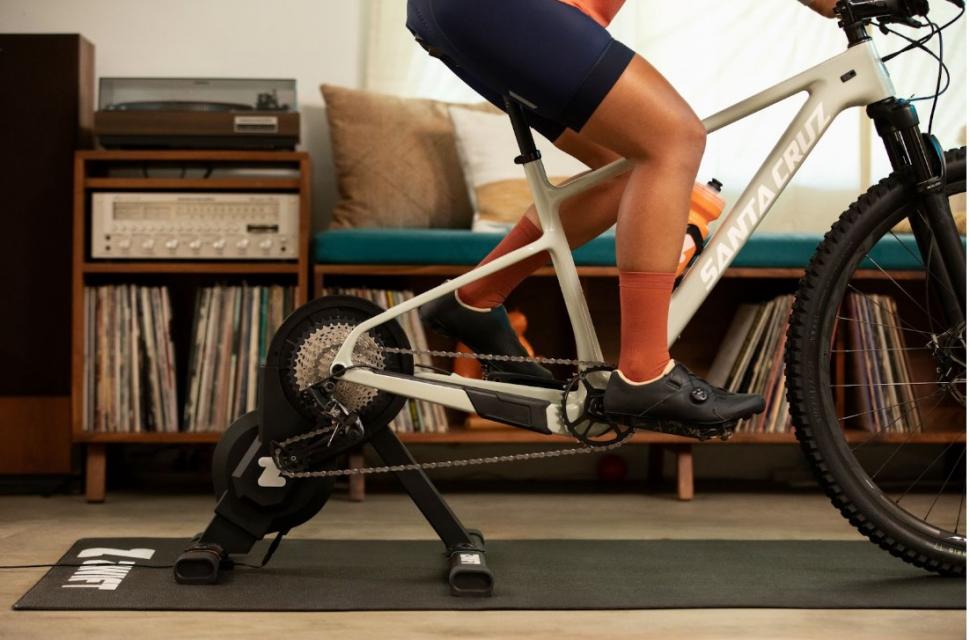

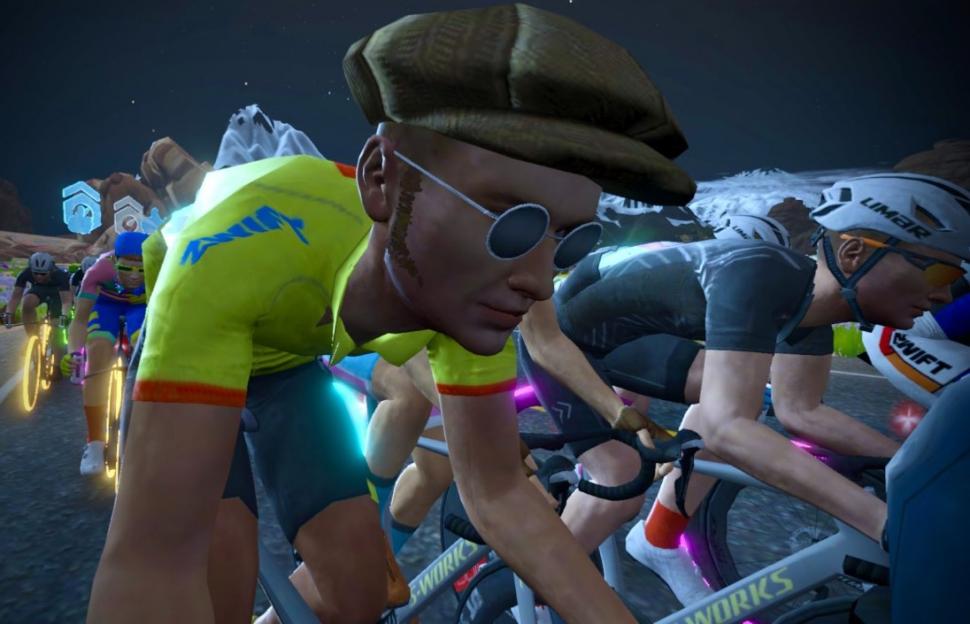
Add new comment
17 comments
Great for building fitness - not so good on improving the skills front. Though I'd guess that most aren't bothered about that side of the discipline.
Whilst it's obviously great that there's now a few different platforms out there (more competition = means hopefully more ionnovation). Zwift is far ahead by a huge margin in terms of regular users. The training plans suck though. TrainerRoad offers by far the best, scientically proven training plans but doesn't offer any sort of entertainment or engagement. If something like these were integrated with Zwift, then it would be gameover for the other platforms IMO.
The annoyance to me is that the workouts in Zwift are great, and could be put together into a good training plan. However, there is no way to search easily for workouts based on intensity factor or zone.
I did at one point use TrainerRoad workouts and ride on Zwift at the same time to make it more interesting, but to be honest I found being on Zwift added little to the workout interest, as you are typically in Erg mode.
The most motivating thing on Zwift is the racing... depending on the length these can be long threshold over/under sessions or VO2max. Fitness after some racing came on leaps and bounds. Pace partners good for steadier sessions, or you could mix it up by dropping off the back of the group and catching up.
I personally have "enjoyed" the full Zwift training plans - there are maybe 20 odd? Not sure whats missing compared to TR mind you. Just know I've boosted FTP twice whilst using them.
Personally I can't bear the animated virtual world stuff, it just reminds me that I'm not outside. I've tried Zwifting, Wahooing, Sufferlandria, race videos etc. and I just can't get on with it. Trainerroad however is great, I can watch anything on catch up TV or Netflix while not feeling quiet as miffed that I'm missing the outside world. I suppose this is proof if ever it were needed that we're all different, choice really is a good thing.
I used TrainerRoad for several seasons, and then last season switched to Xert.
It's possible that TR has changed, but certainly when I was using it, there was a lot of criticism of their training plans being too hard, no where near enough zone 2 work, and far too much sweetspot and harder work. From what I've read and watched, the scientific consensus seems to be that polarised or pyramidal training is generally the most effective, and that means the majority of your training is at zone 2. TR certainly didn't do that (and I don't know if it's changed).
I can well believe that an awful lot of people find the competitive and social sides of platforms like Zwift compelling. And yes, as others have said, anything that helps more people do more exercise, should be lauded.
What I somewhat fear (and this could just be the cynic in me), is that these platforms, in an attempt to become ever more sticky, have ever more users, and be ever more profitable, is that they follow the facebook route of doing anything that makes you stay on the platform for longer, rather than help you achieve your training goals, *particularly* when your training goals can be achieved by modest hours of focused work.
FulGaz recently introduced avatars, the thing was the equivalent of 4 metres tall - bizarre!
I don't really see that Zwift have upped their game, other than some UI changes.
I remain unconvinced by Makuri Island as a concept. Its not a real place and I don't understand why they didn't just make it a Utopia extension, and leave the 'guest' worlds for modelled real-life routes. "What we want is to be able to ride on sand." Said no road cyclist, ever.
Zwift need to sort out their training user interface, which is poor. The workouts are good, but other than by duration there is no way of filtering.
I think Makuri islands is the most disappointing Zwift world yet. Stupidly short and overly detailed (especially for their aging graphics engine). I got more enjoyment from Paris/France.
I'd trade distance for eye candy any day of the week. Its not like you notice the details at the end of a heavy set of intervals anyway.
So they're about to release a whole load of improvements to training plans, scientifically shown to help you become faster, fitter, and healthier, to complement all these games and gimmicks, right? Right?!
I appreciate your point. I have no experience with one of these trainers, but one of my mates from my days as a US Cat. 2 roadie (40 years ago) keeps bugging me to get one. And I'm reading this and thinking, '...wtf?'. I won't do Strava because I think it's stupid and I eschew most social media and have no interest in chatting on the bike. Never did. But I still enjoy my buddy's company for some reason and can see some utility in it for that.
So I don't know what to think about this news.
They would argue that the more gimmicks the stickier the platform and the more virtual miles you do, hence the better for your fitness it is.
What do you think is missing on the training side? I found both the training plans on Zwift and Sufferfest improved my FTP albeit from a recreational cyclist level.
To answer your question concisely, msackman. They already have. I didn't touch on it because all of the major virtual cycling platforms have an extensive library of workouts and progressive training plans. Zwift has route-based workouts, and Wahoo X launched AI-generated training that encompasses real-life and virtual training.
Of course, virtual cycling isn't for everyone. I get it a lot. Usually from traditional cyclists who've never given it a try. I've raced my bike up and down the East Coast and rode my bike across the US last summer.
I was skeptical at first. Not anymore.
I gave virtual cycling a try because I had a young family and was building my PT practice. The darkness and cold forced me inside during my only available early morning training time. I would drone away on a Computrainer. The interactive virtual cycling platforms made the training more comfortable and efficient.
That's why I started virtual cycling. I stayed and now ride and race primarily indoors because of the vibrant social connection and community. Oh yeah! I'm stronger now at 51 than I was when I was racing in my thirties.
That was my experience also; I have used turbos for years and always hated them. Finally bought a Wahoo Kickr and an Apple TV but they remained unused for a good year before finally getting my arse in gear and signing up to Zwift.
It's been something of a revelation. I don't chat to anyone but the difference the app makes to the palatability of indoor training is transformational. After 2000 km I've now started doing a few races too and these have been good as well (as long I remember to stay at the front. Just like real races.)
Wahoo X membership for RGT now includes the old Sufferfest and some really good on bike and off bike training plans.
I use a turbo more than ever now I work from home, there would be no point me getting kitted up in winter for a lunch break ride but now I can go and do 45minutes of riding, shower and be back at my desk within the hour.
The other bonus is training through winter conditions, a few years ago I slid off on ice on a gentle ride and busted my collarbone so lost most of my fitness. Now I prefer to just skip any riskier rides and replace them with this